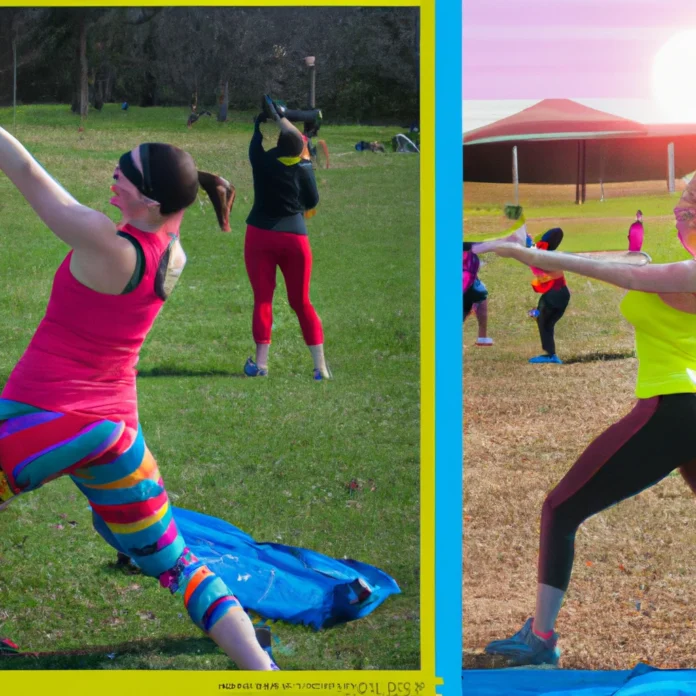Why Your Warm-Up Should Match Your Workout Intensity
When it comes to fitness, one of the most overlooked components of a successful workout is the warm-up. Many people tend to underestimate its importance, often opting for quick stretches or jumping right into their routine. However, we are here to emphasize that your warm-up should match your workout intensity. This alignment is essential for optimizing performance, reducing the risk of injury, and enhancing overall workout results. In this comprehensive article, we will delve deeper into the reasons why your warm-up needs to correspond with the intensity of your workout, how to properly structure it, and additional tips for maximizing your fitness journey.
The Science Behind Warm-Ups
A warm-up serves multiple purposes. Primarily, it prepares the body for the physical demands that will follow. It raises the heart rate, increases blood flow to the muscles, and enhances the elasticity of the muscles and tendons. According to research, the right warm-up can significantly improve performance by enhancing muscle power and strength. Inadequate preparation can lead to suboptimal performance and a higher likelihood of injuries.
Understanding Workout Intensities
Before we can effectively discuss warm-ups, it is crucial to understand what we mean by workout intensity. Workout intensity can vary based on several factors, including:
- Type of Exercise: Whether it’s strength training, aerobic exercises, or high-intensity interval training (HIIT).
- Duration: Longer sessions may require different warm-up strategies compared to shorter, high-intensity bursts.
- Your Fitness Level: Beginners may need a different approach compared to seasoned athletes.
How to Match Your Warm-Up to Workout Intensity
To ensure your warm-up is adequately matched to your workout intensity, consider the following steps:
1. Assess Your Workout Plan
Before any workout, take a moment to assess what type of exercise you will be performing. If you plan to do a high-intensity workout, your warm-up should be more dynamic and involve movements that mimic the exercises you will perform. For example, if your workout includes sprinting, your warm-up should include light jogging and dynamic stretches focused on the legs.
2. Duration Matters
The duration of your warm-up should correlate with the intensity of your workout. For high-intensity workouts, a warm-up of 10-15 minutes is advisable, whereas lower-intensity sessions may only require 5-10 minutes. This period should be utilized to gradually elevate your heart rate and warm up your muscles.
3. Types of Warm-Up Exercises
Different types of exercises can be included in your warm-up. Here are a few suggestions based on workout intensity:
- Low-Intensity Workouts: Consider gentle stretching, walking, or light cycling.
- Moderate-Intensity Workouts: Incorporate dynamic stretches such as leg swings, arm circles, or bodyweight squats.
- High-Intensity Workouts: Engage in sport-specific drills or plyometrics, such as jumping jacks, burpees, or high knees.
4. Incorporate Mobility Work
Mobility exercises can enhance the effectiveness of your warm-up by improving joint range of motion, ensuring your muscles are ready for the demands of your workout. For high-intensity workouts, include movements such as hip openers, thoracic spine rotations, and ankle mobility exercises.
The Benefits of a Proper Warm-Up
Investing time in a structured warm-up tailored to your workout intensity can yield several benefits:
- Injury Prevention: A proper warm-up decreases the likelihood of strains and sprains, preparing your muscles and joints for the activity ahead.
- Performance Enhancement: Warmed-up muscles are more responsive, allowing for better strength and power output during your workout.
- Mental Preparation: A warm-up also serves as a mental cue, signaling to your body that it’s time to transition from rest to activity.
Common Mistakes in Warm-Ups
Even with the best intentions, there are common pitfalls to avoid when it comes to warm-ups:
- Skipping the Warm-Up: Neglecting to warm up altogether can lead to poor performance and increased injury risk.
- Static Stretching: While static stretches can be beneficial post-workout, they are not ideal for warming up as they can temporarily decrease muscle strength.
- Inadequate Duration: A warm-up that is too short may not prepare the body sufficiently for more intense activities.
“A proper warm-up is not just a routine; it’s a vital component of a successful workout.”
Tips for an Effective Warm-Up Routine
Here are some additional tips for designing a tailored warm-up routine:
- Listen to Your Body: Pay attention to how your body feels during the warm-up and adjust the intensity accordingly.
- Stay Hydrated: Hydration plays a vital role in muscle function, so ensure you are adequately hydrated before starting your warm-up.
- Consistency is Key: Make warming up a non-negotiable part of your workout routine, regardless of the intensity.
Conclusion
In conclusion, matching your warm-up to your workout intensity is essential for achieving optimal performance and minimizing the risk of injuries. Whether you’re engaging in low, moderate, or high-intensity workouts, a well-thought-out warm-up will set the stage for success. Remember that the right preparation can enhance your workout experience and lead to better results.
For those looking to support their fitness journey further, consider integrating high-quality supplements into your routine. Buy Myprotein products to fuel your body effectively. Visit Myprotein for a range of health supplements tailored to your needs.
We encourage you to make warm-ups a priority in your fitness routine. For more health and lifestyle tips, visit Lifestyle Home.

